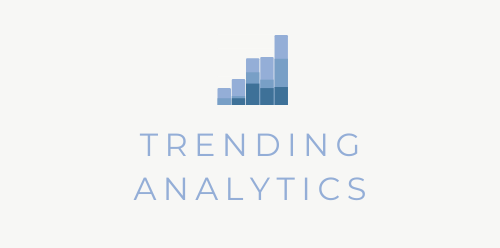Episode 34: 5 Dashboard Mistakes to Avoid
Here are 5 dashboard mistakes that I think you should avoid and how you can do that.
You can also listen on Apple Podcasts, Google Podcasts, and Spotify.
Get in Touch with Hana
Let me know what you think of the episode, you can
message at hana@trending-analytics.com or on Instagram @hanalytx.
If you are looking for podcast updates and want additional tips on how to visualize and present data sent straight to your inbox, then make sure to subscribe to my weekly data letters here.
When you hit that subscribe button, I’ll be sliding into your inbox every Wednesday with an email.
Love the show? Why not leave a review?
If you loved this episode of the Art of Communicating Data Podcast, why not leave a review on Apple Podcasts and Spotify?
It only takes 2 minutes and provides me with invaluable insight as to what the listeners think.
If you enjoyed this episode, check out this episode where I share tips on how to put your audience first when making data visualizations.
Episode Transcript
Generated automatically – there may be some errors.
5 Dashboard Mistakes to Avoid
5 Dashboard Mistakes to Avoid
[00:00:00] Hana: To ensure that your dashboard is effective and usable, it’s important to avoid some common mistakes. This episode will discuss five common mistakes to avoid when building your dashboard. Now, I know people have their own list of what they consider to be a mistake when building a dashboard and some items can be up for debate.
[00:00:18] So I try to select mistakes that I think most people would be in agreement on. So, you know, we. These mistakes are in no particular order. And the first one is a mistake we talked about in the previous episode with data visualizations, and that’s with choosing the wrong chart. With dashboards. There’s sometimes this desire, I’ve noticed, in people to show a variety of charts or mix, mixing some unique ones to basically make the dashboard look more interesting.
[00:00:48] The mistake is using a variety of charts for the sake of variety alone, not because each of these charts are the best ones to convey a particular message. So I recommend that you strike a balance, and first and foremost focus on choosing charts that will best communicate the message that you want to convey to your target.
[00:01:12] The second mistake is taking attention away from the most important parts of the dashboard. This could be done in a variety of ways, like a design choice in some other part of the dashboard that attracts your audience’s attention away from the most important parts.
[00:01:27] Or it could be where you end up placing these charts like tucked away at the bottom of the dashboard. . Typically, people look at the top of the dashboard first, usually starting from the left hand side, so that’s the general area. I would recommend placing the most important parts of your dashboard and making sure there aren’t other distracting elements on your dashboard that could be competing for attention.
[00:01:51] Third is not tracking the right metrics. You want to monitor and measure your key metrics, and you should have clear goals in mind for each of these key metrics, such as leads generated per month, or total sales generated from customers. The fourth is not providing enough context to the data. You wanna make sure you’re providing the right and enough context for the key measures you are displaying. So you wanna make sure you address if the numbers mean something good or bad.
[00:02:20] Does it mean that we’re on track for a particular goal. What is that goal? Are we doing better than last year or last quarter, et cetera. So what context you provide depends on your target audience and what they care about and the goals of your project.
[00:02:37] Finally, this is more of a catch-all mistake, so I’m kind of cheating here and. That mistake is having a poorly designed dashboard. It’s important to ensure that everything on your dashboard is legible and easy to read by adjusting the scale, making sure layout and font size or al in order, and I’ve seen dashboards where the background is very colorful and noisy and doesn’t provide enough.
[00:03:05] For the charts and texts to be easily readable. Some people like Stephen f believe that a dashboard should fit in a single screen and not expand beyond that. Like in another page that requires scrolling. So anything that doesn’t fall within the screen is assumed to be unimportant or unnecessary. , but I know this can be challenging if you primarily design for the computer screen, but someone uses the phone to view your dashboard and they will most likely have to scroll to view the entire dashboard in that case.
[00:03:36] So these are the five mistakes to avoid when building your dashboard that I wanted to share with you today. To recap, there are one, choosing the wrong charts. Two, taking attention away from the most important elements of the dashboard. Three, not tracking the right metrics. Four, not providing enough context to the data.
[00:03:54] And finally, Having a poorly designed dashboard. I hope this helps. Next time you’re building a dashboard. If you didn’t listen to the previous episode on five Data Visualization Mistakes to Avoid, I recommend that you check that out in case you learn something new.
